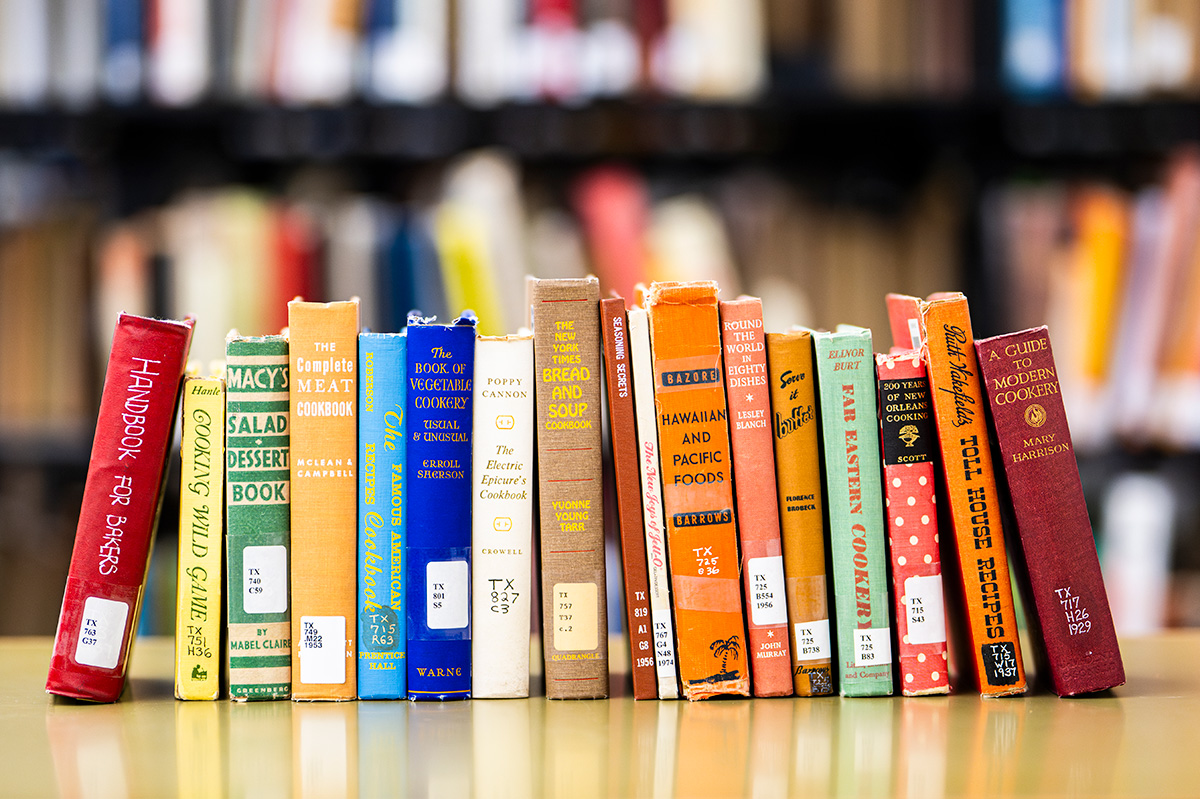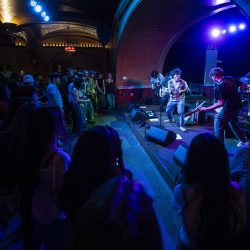Now We’re Cookin’
For 60 years, UW’s Steenbock Library has been growing its cookbook collection.

From soup to nuts to a lot of Jell-O, the UW’s cookbook collection has it all. Many of the volumes come from private collections, which explains why there’s something for every conceivable taste. Bryce Richter
If there’s a box of Jell-O in your pantry and you don’t know what to make with it, head down to UW–Madison’s Steenbock Library. But allow time for browsing.
Sure, you might find immediate inspiration in the pages of New Jell-O Recipes (1922), The General Foods Album of Jellied Salads and Aspics (1951), The Joys of Jell-O (1961), or Jell-O: Celebrating 100 years (1997). But don’t settle for the obvious. Dig deeper, and you’ll find something special. In Seasoning Secrets: Herbs and Spices, legendary UW chef Carson Gulley has a recipe for molded fish salad (good for salmon or trout!). In Camouflage Cookery, you’ll find a gelatin-based recipe for mock tomato salad, ideal when real tomatoes are too great a luxury.
Steenbock has more than 7,000 cookbooks. According to librarian Karen Dunn MA’98, the shelves began filling with a gift from Mortimer Levitan 1912, a local lawyer and gourmet. In 1965, he was looking for a permanent home for his 2,615 cookbooks and gave them to his alma mater.
Steenbock Library opened in 1969 to serve the College of Agricultural and Life Sciences and the School of Human Ecology, and the majority of cookbooks were assigned there. Many are filed under the Library of Congress call numbers beginning with TX 700. (T is technology, and TX indicates home economics.)
Over time, the UW added more titles, with notable donors including Rheta McCutchin ’56, former head of food service for UW Housing. “She would bring in grocery bags, shopping bags of cookbooks,” says Dunn. These included her five-binder set of favorite recipes, including instructions for her famous crème de menthe brownies.
Cookbooks are cultural artifacts, and they offer insights along with recipes. By reading one, you can discover what foods were common or pricey and what the people of a certain place and time knew or believed about those from other lands. A Waunakee community cookbook includes a recipe for chow mein hot dish, suggesting a curious understanding of Chinese cuisine. (It includes, in addition to canned cream of mushroom soup and egg noodles, “one large bottle soy sauce.”)
Many of the UW’s cookbooks came from private collections, which Dunn says explains their “seemingly random” nature. While the university libraries are always adding, they have to be discerning.
“There [are] a lot of individual curators and collectors out there who have hundreds and hundreds of cookbooks, and they want to donate them someplace that might be useful,” she says. “But shelving space can be challenging for our library institutions. Generally, we can only accept donated materials if they are unique to the collection. We can’t always take [collections] in their entirety unless [donors are] comfortable permitting us to make selections from their collections or to offer them to our Friends of the Libraries.
Published in the Summer 2025 issue



Comments
No comments posted yet.